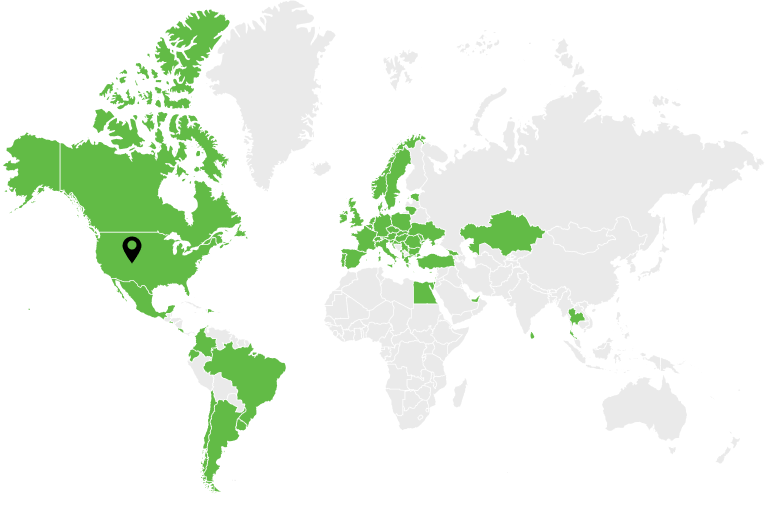Application security testing services are procured alongside the app development services—by weathered creators, that is; it’s cheaper and more efficient when DevSecOps principles are applied from early on. The others learn the value of AppSec in general—and its testing arsenal in particular—the messy, cumbersome, and expensive way.
Let’s review how companies test their applications to make them more resilient, efficient and safe.
What is Application Security Testing?
Application Security Testing [AST] is a set of proactive activities aimed to make a web or mobile application more resilient towards known security threats and vulnerabilities by subjecting it to a set of technical checks during the build, deployment, and maintenance stages—in a static state and dynamically.
AppSec testing can be manual and automated, static and dynamic, focusing on the code as well as its conduct on a specific device, white box and black box.
AppSec Testing Guides & References
One of the biggest authorities in all matters cyber security is OWASP. The organization unites commercial and governmental institutions together with cyber security enthusiasts to provide the industry with tools to better the infrastructure for all.
Multiple application security requirements are set out in a few major collections of resources:
- OWASP TOP 10
- Mobile Application Security [MAS]
- Security Knowledge Framework [SKF]
- Application Security Verification Standard [ASVS]
- Mobile Application Security Verification Standard [MASVS]
- Mobile Application Security Testing Guide [MASTG]
- OWASP MAS Checklist
All these projects are constantly updated by multiple contributors on GitHub and represent the top security best practices for education, guidance, and control.
Mobile App Testing vs Web App Testing
There’s quite a significant overlap between how testing is performed on mobile apps and web applications.
However, several key characteristic features make mobile app testing rather specific:
- The mobile screen is small only when compared to a desktop, and the entire structure and UX/UI design is driven by this fact. So, you have limited features, but they are all critical and need to be hyper-intuitive. A mobile screen also suggests specific authentication methods that need to be tested for security, like a fingerprint or a face recognition feature.
- The mobile app needs to run on different devices produced by various suppliers with their own set of technical characteristics. And each new app release needs to be tested on all of these different devices, with various OS versions, etc.
- The mobile application needs to be physically downloaded from a marketplace to a device and, respectively, the secure environment does include the secureness of the device itself.
- Many mobile applications are created to be distributed on marketplaces like App Store and Google Play market. This difference implies a stricter approval process for the security levels, so users get to enjoy a more audited environment with mobile apps. If you are creating an enterprise-grade desktop application, you are limited and guided by internal procedures and industry best practices.
- When you build a web app, a significant part of your data is hidden behind firewalls on the server. But with mobile versions, IOP logic as well as most of the code in its entirety is downloaded onto a user device, opening to a whole array of potential vulnerabilities.
- Browsers also handle SSL/HTTPS calls on web apps as well as keep the data isolated from the files and local memory.
- Running tests on browser-run apps is less cumbersome, as many of the test frameworks can be loaded directly into a browser environment, unlike with iOS and Android operating systems that are fairly gated in comparison [specifically iOS].
Now let’s consider the key types of AppSec testing, all of which are pertinent for both mobile and web versions.
Types of Application Security Testing Services
In 2023, security testing of mobile apps as well as those designed for web browsers are part of the DevSecOps framework. The framework suggests that testing starts as early as possible in the ADLC and is partially automated to ensure continuity for quicker new feature releases and better code quality.
Software Composition Analysis [SCA]
SCA testing implies scanning of third-party software components, dependencies, and libraries used in app development for vulnerabilities, patches, and fixes.
Application developers use a number of libraries and repositories when creating the apps [e.g., open-source package registries for Golang, Python, npm]. In fact, writing all code from scratch is unnecessary—it’s like reinventing the wheel. So, up to 70% of code in an average app may come from open-source resources.
To make things even more complex, there are also multiple transitive dependencies to check and update: for example, when one open-source program relies on another open-source program. This poor visibility is one of the core challenges for an AppSec specialist trying to perform an SCA test alongside the complexity of identifying the logic between dependencies and the ever-growing number of known and unknown vulnerabilities and their databases.
All major application security testing platforms will have a set of tools devoted to SCA. This software uses AI and ML to keep an eye on the most popular open-source repositories and will remediate any newly disclosed vulnerabilities as they become known.
Static Application Security Testing [SAST]
SAST aims to check the code as it’s written, but not yet used, statically, or at rest.
The SAST tools may be integrated right into a programmer’s IDE [interactive development environment], monitoring for code weaknesses that may result in vulnerabilities and provide options on how to fix this weakness. Alternatively, reports are generated for later review and remediation activities.
SAST is white box testing. The tester can see and analyze the code having exhaustive information about the program’s inner workings and all needed accesses.
Dynamic Application Security Testing [DAST]
Dynamic AppSec testing is performed because the application is built in a black box manner. So, the DAST tools will scan and analyze the app as an outside user without access to the code, looking into the interfaces, scripts, requests, and responses to them, sessions and authentications.
This testing allows the tester to check an app closer to the end of the SDLC, after the development stage, making the discovered vulnerabilities more expensive to remediate rather than when identified at rest during the build phase.
Interactive Application Security Testing [IAST]
IAST runs the test as the application is run, so it’s perfect for continuous testing and doesn’t make developers waste precious time during the SDLC.
This type of app security testing only checks the parts of the code programmed by the test script of this functional testing.
It’s repeatable for process automation, so you can reuse the same script. IAST is often deployed in the QA environment, helping find CWEs in web apps, non-web apps, as well as mobile ones. It can also help identify and report behavioral issues.
IAST is often performed alongside DAST and SAST for best results.
Mobile Application Security Testing [MAST]
Mobile application testing unites all the above categories when they are used to check a mobile application.
Penetration testing is often used as part of security testing in mobile applications. Dynamic, static, and interactive methods are all part of this toolkit. The test can be automated and manual.
Due to a number of specific languages and frameworks used to create apps for different OS used on mobile devices, security testing for mobile apps is more complex than that of web apps, which are more language-, OS-, and device-agnostic.
Runtime Application Self-Protection [RASP]
The RASP tool has access to the inner workings of an application at runtime, so it can pick up changes to the app’s behavior and provide timely alerts.
These AppSec tools allow for detection and potentially block Zero-Day Attacks, as they pick up on anomalous behavior on top of having great visibility into application layer attacks.
App Sec Testing Process
The process of application testing consists of these main phases: preparation, data gathering, mapping, exploitation, and reporting.
During the preparation process, a testing team will need to define the scope of the test, understand specific security-related characteristics of the software, and the purpose for running the test—be it compliance, pre-launch activity for a market, or internal audit for an annual stakeholders report. Legal papers like NDAs and authorization to enter the system for the AppSec experts are also signed at this stage.
The intelligence gathering phase allows the security specialists to gain a more in-depth technical comprehension of the architecture as well as the system’s context.
When mapping the application, a tester will use results of manual checks as well as the automatic scans to come up with a full schema of all elements that need to be subjected to specific tests. These potential vulnerabilities are usually compiled in the order of severity of the damage their exploitation is likely to lead to. Test script writing is part of this phase, too.
The testing stage follows when the planned scenarios are applied to systems to reveal real weaknesses and vulnerabilities.
The reporting stage sums up all the findings and usually sets out priorities, tools, and methods for how the disclosed bugs can be fixed.
The below blueprint goes into a more detail of the entire process:
- Identify potential threats taking into account the type of application and OWASP best practices and CWEs.
- Create a test plan with a good understanding of the software used and a well-defined scope of testing.
- Write test cases with detailed descriptions and expected results.
- Select an application security testing tool.
- Plan your resources – human and technical. Do you need to hire an AppSec company to perform this task or is an in-house team knowledgeable enough to pull it off?
- Prepare the test environment.
- Run the test.
- Document all findings and elevate urgent disclosed security vulnerabilities to concerned team members for immediate remediation.
Let’s now review some of the industry’s top AppSec tools.
Application Security Testing Tools
A few major factors to consider when choosing the testing tool are the development languages you are using, if you need to test a mobile, web, or hybrid app, your existing tech stack, and your budgets.
That said, it’s not unusual for the security testing services to be outsourced such as when:
- The exec suite wants to check the output of the in-house development team securing the user.
- The product is about to go through an audit and management is seeking to warrant a successful compliance audit.
- The company needs to make sure that the app is ready to be uploaded and sold on the App Store or in Google Play.
- The app has to do with finance and needs to be PCI and GDPR compliant to be able to secure the best payment methods.
Whatever the case, clients often either follow the recommendation of the AppSec partner or initially request that systems used for previous tests be used again for consistency in document versioning.
These platforms have great standing with the world’s top AppSec experts:
Dev.Pro security specialists may use some of these sophisticated tools more than the others, but the mindset is to stay vendor-agnostic for the benefit of our clients—as well as to keep exploring all new innovative solutions as they come out.
App Security Testing Services
If your company is concerned about the security of the mobile applications they are using for enterprise needs or to sell to customers, consider reaching out to Dev.Pro.
The spectrum of our app security testing services encompasses missions from consulting, risk assessment, and threat modeling to putting together a comprehensive test strategy plan, and test script writing to conducting fully fledged SCA, SAST, DAST, and IAST services.
Discuss how we can make your application safer today.


